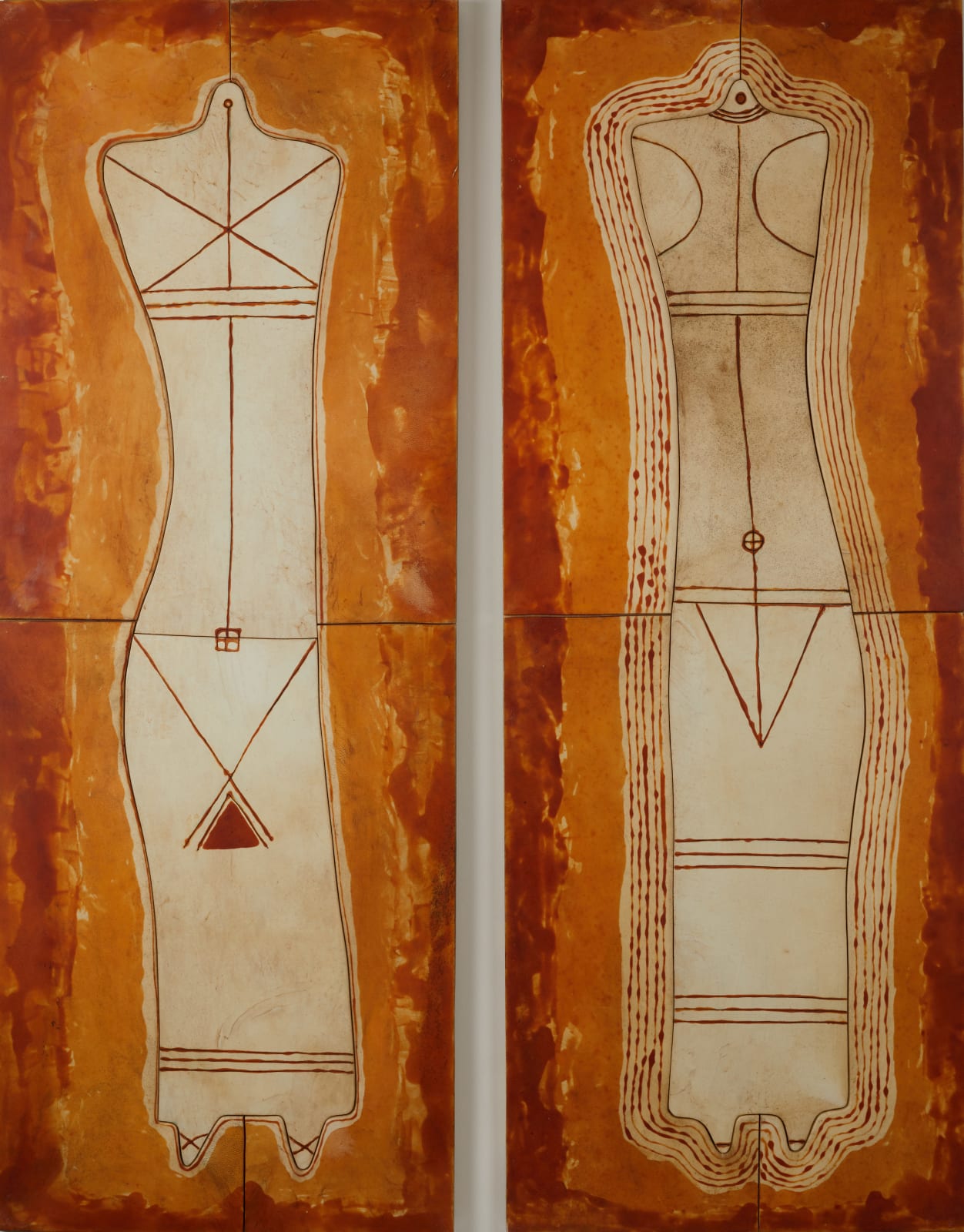
Farid Belkahia
As one of the founders of the Casablanca Art School, Farid Belkahia defied entrenched pictorial traditions and defined a modernist discourse and pedagogy that are emblematic of his Moroccan heritage. His approach imperatively propelled a deliberate disruption of the conventions of art production — an explicit rupture with Western referential principals, grounds and aesthetics. Through a reappropriation of traditional arts that debunked the lineage of colonial modernist frames, his new symbolic iconography restored the sanctity of materials and the graphism used in Moroccan and Islamic handcrafts. After a fruitful journey of working with copper, he turned his focus to a rather exacting material, animal skin, which simultaneously pays homage to parchment and traditional mediums in Islamic arts.
By distilling form to its most basic elements, the diptych Le Couple presents a couple in a state of undress, yet modestly rendered, directing attention to their essence rather than their physical attributes through a geometrization that swirls around a transcendental dimension beyond form. The omission of heads and the abstraction of body parts elevate the figures to symbolic representations of humanity’s primitivity rather than physicality. This approach not only reflects the elemental nature of human connection but also highlights the enduring significance of relationships, deeply embedded in our shared memory as a species. Resounding with Belkahia’s perpetual exploration of profound abstract and spiritual themes of fecundity, unity and the cosmos, he navigates representations of the masculine and the feminine, the esoteric and the erotic.